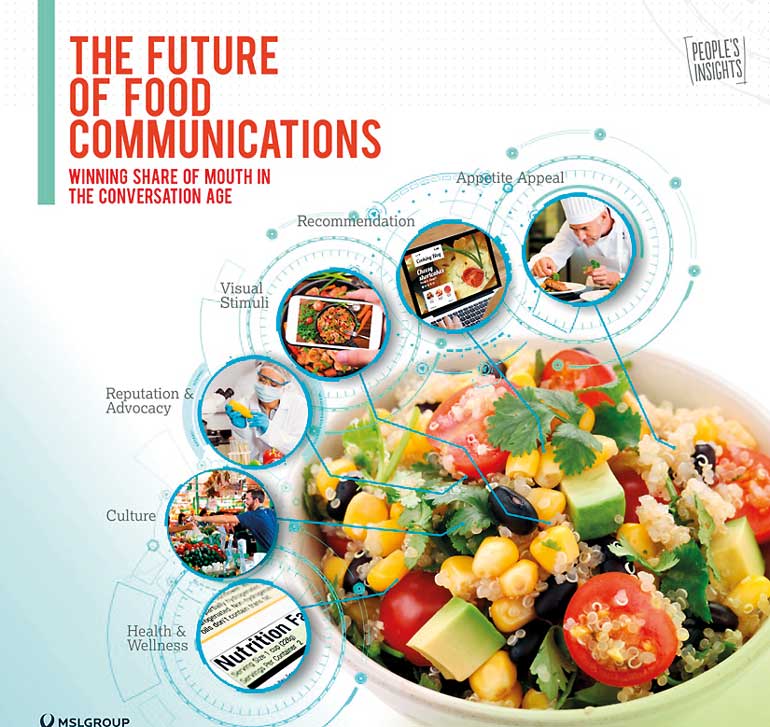Tuesday Nov 26, 2024
Tuesday Nov 26, 2024
Monday, 25 July 2016 00:00 - - {{hitsCtrl.values.hits}}

Based on the need for a transformative communications model in the modern food and beverageindustry, MSLGROUP has unveiled Six Communication Drivers for Winning Share of Mouth in the Conversation Age.
The drivers –distilled from the expert opinions of top food industry communications experts inside and outside the firm -- are supported by secondary research. They are outlined in the latest People’s Insights Series, ‘The Future of Food Communications: WinningShare of Mouth in the Conversation Age,’ that provides a deep look into future food and food communications that are also relevant to the Sri Lankan market. In Sri Lanka MSLGROUP whichis a part of Leo Burnett, handles a vast and diverse portfolio of clients including multi-nationalsand major local companiesin the food and beverage sector.
According to MSLGROUP Chief StrategyOfficer Pascal Beucler, “in order to succeed in the conversation age, food and beverage brands need to rely on a contemporary mix of communications techniques from powerful visual stimuli to social influence at scale, as well build an attractive brand reputation, a brand narrative that delivers modern appetite appeal, a health and wellness story and a strongc onnection to culture.”
MSLGROUP has organised the Six Communications Drivers into a new diagnostic tool that is the centerpiece of how it assesses and organises the communications activities of food and beverage companies and brands.
“These drivers can help food and beverage brands profitably balance their communications,” said Steve Bryant, Managing Director, MSLGROUP in Seattle and one of the global agency’stopfood experts. “They are the beginning of an important dialogue about how the latest communications practices, platforms and channels can be strategically deployed to maximise revenue.”
Through opinion piecesfrom experts at MSLGROUP and in the food industry, The Future of Food Communications highlights key takeaways, whichinclude:
Food choices and preferences today depend on a multitude of factors, including peer recommendations, personal ethicalconcerns, specific health needs, and cultural relevance, among others. Food companies need to understand and respond with precision engagement to effectively win share of mouth.
With increasing awareness of thebroad impact ofour foodchoices, consumers and activists areseeking and sharing information about what goes into their food. Proactive transparency are required to ensure consumer trust and advocacy.
Food habits have evolved dramatically– sit-down meals are increasingly replaced by on-the-go snacking. The connectedconsumers of todayrequire brands to reachthemwherethey are – physicallyas well as mentally. It’s as much about accessibility as itis about strategic, timely communication.
Technology holds great promise in food innovation, yet it is essential for the food industry to powerfully communicate the benefits, explaining new technologies, cultivating trust in unseen innovations, and popularising new ways of eating, especially at a time when consumers value the apparent simplicity of natural, farm freshfoods.To successfully steer this conversation, food and beverage brands can highlight themes of transparency, innovation, personalisation and mobility.
Summing up the report, Bryant concluded : ″Consumers todayseek a seemingly paradoxical all-natural, yet high-tech future of food. For marketers, that’s a caution to revisit their communication plans, understanding what key factors now drive consumption and revenue.″
To read‘The Future of Food Communications: WinningShare of Mouth in the Conversation Age’ visithttp://bit.ly/FutureofFoodComms